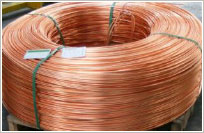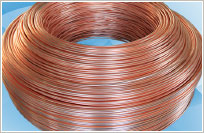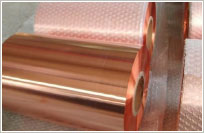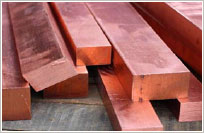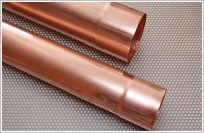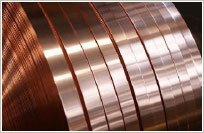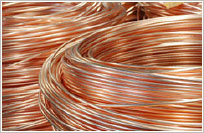Oxygen-free copper M0b
- NON-FERROUS METALS
- General information
- About us
- Rolled COPPER
- Rolled Copper
- Oxygen-Free copper
- Oxygen-free copper M0b
- Copper rod
- Copper rolled metal
- Copper seam roofing
- Copper metal roofing
- Copper shingles
- Copper roofing sheet
- KME copper roofing
- Copper roofing TECU
- Copper roofing M1f GOST 495
- Copper roll
- Roofing made of copper M1f GOST 1173
- Patinated copper TECU (oxidized copper)
- Other rolled cooper
- Copper wire
- Copper welding wire
- Tinned copper wire
- Wires copper winding
- Copper wire electrical
- Enameled copper wire (enameled wire)
- Copper square
- Copper profile
- Copper Angle
- Profiles of copper M1
- Profile Copper M2
- Copper rods
- Circle copper M1r
- Cooper circles M3
- Copper circles M2f
- Cooper rods M3R
- Copper circle M1f
- Rod copper M1
- Rod copper M2
- Copper hexagon
- Pipes made of copper
- Copper pipe GOST 21646
- Copper tube GOST 16774
- Copper pipe profile
- Copper pipe rectangula
- Copper-nickel pipes
- Copper pipes and fittings GOST R 52318
- Copper pipe for underfloor heatin
- Copper pipes for water supply
- Copper pipes for heating
- Copper pipe GOST 617
- Copper tubes annealed
- Copper pipe seamles
- Copper pipe annealed
- Copper pipe thick-walle
- Cooper thin-walled pipes
- Pipes made of copper GOST 2624
- Copper capillary pipes Group B
- Copper capillary pipes Group A
- Flat rolled copper
- Copper tape GOST 1173
- Tape Copper M2
- Tape copper electrical
- M1 Copper tape
- Soft copper tape M1
- Copper plate GOST 1173
- Copper plate M1
- Copper strip GOST 495
- Cooper band M1
- Copper foil GOST 5638
- Copper Foil M1
- Copper sheet GOST 495
- Copper sheet M1r
- Copper sheet M1r
- M2 Cooper sheets
- Copper ingot
- Copper MB (vacuum copper)
- Copper MK
- Electrical copper M1E
- Copper ingots
- M1 copper ingots
- Copper cathode
- Cathode copper m2K
- Copper cathodes M0k
- Copper cathodes M00k
- Copper Cathodes M1k
- Copper powde
- Copper nanopowder
- Copper powder superfine PMVD
- Ultrafine copper powder PMU and others
- Electrolytic copper powder
- ICP-1 Copper powder
- Cooper grid
- The alloy of copper-phosphorous
- Copper phosphorous MF9
- Phosphor copper MF10
Oxygen-free copper M0b
M0b anoxic copper is high-purity copper, where the copper content is no less than 99.99%, the oxygen content - 0.0003%, other impurities - not more than 0.004%. It has important technological features: electrical conductivity (0.01707 - 0.01719 mO / m); thermal conductivity (386 - 390 W / m * deg); uniformity of structure; resistance to embrittlement (hydrogen). According to these indicators, oxygen-free copper grade M0b quite a bit inferior to silver. Classification of copper on marks made by its chemical composition and is defined in IEC 859 - 2001. Production of copper especially determined by the content of impurities and oxygen content. Copper high purity (M00b and M0b brand) - copper is oxygen-free, wherein the oxygen content of no more than 0.0003%. The basic method of producing oxygen-free copper is remelted in an inert cathode, a reducing atmosphere or in vacuo. It comes oxygen-free copper copper often in the form of bars, wire rod, bars. Oxygen-free copper is widely used in various fields of electrical engineering, where the high electrical conductivity of the material is required, but is also used in the following areas: -aviatsionnaya and space industry; -priborostroenie;
-Atomic industry; -E industry; manufacture of medical equipment; manufacture of vacuum technology. Oxygen-free copper grade M0b used in the manufacture of: - Optical telecommunication cables, including submarines; - Switches; - Winding transformers; - Printed circuit boards; - Of coaxial cables and waveguides; - Electrical distribution systems; - Electronic devices.
Copper oxygen-free highly pure bullion.
We are able to supply high-purity oxygen-free copper bullion.
Application.
Use of oxygen-free copper due to its resistance to hydrogen embrittlement and low content of chemical elements, volatile in vacuo at high temperatures, i.e. harmful impurities when used in the electronics industry, and others. spheres.
High purity oxygen-free copper is used in electronic vacuum devices, electron tubes, which allowed only the absolute minimum of volatile impurities that can stand out from the copper in a vacuum and high temperature combinations. Also, for such complex products as the cryogenic and optical devices require high-quality oxygen-free copper.
Some other examples of application:
* magnetrons
* Vacuum Capacitors
* Gaskets for vacuum equipment
* Databases or bases for semiconductors and substrate
* Military equipment, and others.
Purity copper.
Currently used oxygen-free copper "conditional" is divided into pure and high-purity oxygen-free copper.
Pure oxygen-free copper - guaranteed content of Cu + Ag least 99,95-99-97% with the stated conductivity of at least 100% IACS (M0b, Cu-OF).
High-purity (high purity) oxygen-free copper - guaranteed the Cu content is not less than 99.99% of the stated conductivity of not less than 101-102% IACS (M00b, Cu-OFE).
Purity is determined by the copper content of the main substance, expressed as a percentage and is defined as the difference between 100% and the amount of controlled impurities.
Controlled impurities - a list of items in the sample measured to determine the purity.
Standards for determining the purity of copper.
Controlled impurities can be determined by different standards or specifications.
In Russia, the most well-known standard is GOST 859-2001 (14 elements - O / P / S / Zn / Bi / Pb / Se / Te / Sn / Sb / As / Ni / Fe / Ag).
In European and other countries are technical condition grade Cu-OFE (16 elements - O / P / S / Zn / Cd / Bi / Pb / Se / Te / Sn / Mn / Sb / As / Ni / Fe / Ag - GOST 859 -2001 + Cd, Mn) or others.
Controlled impurities from GOST 859-2001 and Cu-OFE are the most difficult to remove and affect the characteristics of the products of copper, used in critical areas at high and cryogenic (low) temperatures as well as under vacuum.
Controlled impurities can also be determined by technical and other terms and conditions agreed between the customer and the manufacturer.
As a rule, it depends not only on the list of controlled items, but also to limit the content of some of them.
859-2001 GOST and technical conditions for the brand Cu-OF / Cu-OFE describe the requirements for pure and high-purity oxygen-free copper. According to the list of controlled items from these standards and requirements to them is guaranteed by the purity of the copper not less than 99% 9x and 99.99%, respectively. Individual results can be higher than 99.99%, but is guaranteed not less than 99.99%, or no more than 100 ppm of impurities.
According to standard technologies and standard list of controlled impurities (GOST 859-2001 and Cu-OFE) is almost impossible (at least in one process cycle) to achieve results above 99.99 (5-7)%, ie the amount of impurities on the standard list less than 30-50 ppm.
The products supplied. Characteristics.
The chemical purity.
For copper ingots purity of greater than 99.99% There is no generally accepted standards, at least we are not yet known. The manufacturer sets its own specifications describing your list of items for which is determined by the purity (100% - the amount of the described controlled impurities). As a rule, the proposed reduction of the list of elements of the standards GOST 859-2001 and Cu-OF (E) or even another list that does not include the elements that affect the characteristics of the products of the copper used in critical areas at high and cryogenic (low) temperatures, also in vacuo.
Sometimes counting the purity of the metal is proposed standard, which includes more than 60 metals. But again, do not include the highly important harmful elements / impurities are non-metals.
The proposed standard - purity of 99.999% (+) under the list of controlled impurities GOST 859-2001 and the standard Cu -OFE (16 elements - O / P / S / Zn / Cd / Bi / Pb / Se / Te / Sn / Mn / Sb / As / Ni / Fe / Ag).
Methods of analysis - laser mass spectrometry, atomic emission spectrometry.
A typical analysis - 99,9991-99,9993%, which limits the analytical laboratory.
It is important not only to absolute purity, expressed as a percentage, but the restriction on specific impurities that have different effects on the characteristics of copper.
Samples can be as high purity 99,9994-99,9997% and above. Purity is not changing, the result of measurement expressed as a percentage. These purity values are in the aisle analytical methods to measure features, and if it is possible to measure stably Oxygen (O) is less than 2 ppm and sulfur (S) less than 3 ppm, which is very difficult analytical methods available purity measurement.
Also on the standard metal test showed no less than 99.999%.
The structure of the copper.
In the specifications of the products of copper not only influenced by the chemical purity and crystalline structure. Typical of our copper ingot consists of several (limited / small amounts of) single crystals grown together - usually below 1-3 + 2-7 above.
Characteristics of copper.
Characteristics of copper are determined by the quality of the copper. The quality of copper is determined by its chemical purity and structure. "Good" copper quality characteristic is its electrical conductivity or resistivity.
Measurements of the electrical conductivity of copper delivered results showed the order of 104-105% IACS.
Conductivity brands M00b (GOST 859-2001) and Cu-OFE is declared at the level of 101-102% IACS.
The difference in conductivity of copper IACS will lead to a significant difference in performance at low temperatures - specific (volume) resistance can vary by tens and hundreds of percent. Surface resistance (reflection ratio) may vary depending on the frequency at ten percent or more.
In view of the above it about the elements limit (the content of specific elements) and the structure, even characteristics of one copper of 99.999% purity and another copper of 99.999% purity can be substantial differences, and reach up to ten percent or more, depending on the characteristics and conditions (low temperatures).
The copper is second only to silver, we offer electrical conductivity and thermal conductivity of copper is close to silver.
The shape, size and packaging.
Ingots have a frustoconical shape close to a cylindrical shape, i.e. the lower diameter less than the upper sides slope of about 1%.
Dimensions ingots (D - diameter, H - height):
1. D70-95mm * H80-160mm weighing 3-8kg
2. D87-95mm * H100-140mm weighing 6-8kg.
A typical / basic size at the moment - Bar D87-95mm * H110-140mm weighing 5-8kg.
The ingots are packed in double polyethylene (inner vacuum) two ingot in a wooden box.
|
|
|
|
|
|
|
|
|
|
|



